-
BackX
-
Components
-
-
Category
-
Semiconductors
- Diodes
- Thyristors
-
Electro-insulated Modules
- Electro-insulated Modules | VISHAY (IR)
- Electro-insulated Modules | INFINEON (EUPEC)
- Electro-insulated Modules | Semikron
- Electro-insulated Modules | POWEREX
- Electro-insulated Modules | IXYS
- Electro-insulated Modules | POSEICO
- Electro-insulated Modules | ABB
- Electro-insulated Modules | TECHSEM
- Go to the subcategory
- Bridge Rectifiers
-
Transistors
- Transistors | GeneSiC
- SiC MOSFET Modules | Mitsubishi
- SiC MOSFET Modules | STARPOWER
- Module SiC MOSFET ABB’s
- IGBT Modules | MITSUBISHI
- Transistor Modules | MITSUBISHI
- MOSFET Modules | MITSUBISHI
- Transistor Modules | ABB
- IGBT Modules | POWEREX
- IGBT Modules | INFINEON (EUPEC)
- Silicon Carbide (SiC) semiconductor elements
- Go to the subcategory
- Gate Drivers
- Power Blocks
- Go to the subcategory
- Electrical Transducers
-
Passive components (capacitors, resistors, fuses, filters)
- Resistors
-
Fuses
- Miniature Fuses for electronic circuits - ABC & AGC Series
- Tubular Fast-acting Fuses
- Time-delay Fuse Links with GL/GG & AM characteristics
- Ultrafast Fuse Links
- Fast-acting Fuses (British & American standard)
- Fast-acting Fuses (European standard)
- Traction Fuses
- High-voltage Fuse Links
- Go to the subcategory
- Capacitors
- EMI Filters
- Supercapacitors
- Power surge protection
- TEMPEST emission revealing filters
- Go to the subcategory
-
Relays and Contactors
- Relays and Contactors - Theory
- 3-Phase AC Semiconductor Relays
- DC Semiconductor Relays
- Controllers, Control Systems and Accessories
- Soft Starters and Reversible Relays
- Electromechanical Relays
- Contactors
- Rotary Switches
-
Single-Phase AC Semiconductor Relays
- AC ONE PHASE RELAYS 1 series| D2425 | D2450
- One phase semiconductor AC relays CWA and CWD series
- One phase semiconductor AC relays CMRA and CMRD series
- One phase semiconductor AC relays - PS series
- Double and quadruple semiconductor AC relays - D24 D, TD24 Q, H12D48 D series
- One phase semiconductor relays - gn series
- Ckr series single phase solid state relays
- One phase AC semiconductor relays for DIN bus - ERDA I ERAA series
- 150A AC single phase relays
- Rail Mountable Solid State Relays With Integrated Heat Sink - ENDA, ERDA1 / ERAA1 series
- Go to the subcategory
- Single-Phase AC Semiconductor Relays for PCBs
- Interface Relays
- Go to the subcategory
- Cores and Other Inductive Components
- Heatsinks, Varistors, Thermal Protection
- Fans
- Air Conditioning, Accessories for Electrical Cabinets, Coolers
-
Batteries, Chargers, Buffer Power Supplies and Inverters
- Batteries, Chargers - Theoretical Description
- Modular Li-ion Battery Building Blocks, Custom Batteries, BMS
- Batteries
- Battery Chargers and Accessories
- Uninterruptible Power Supply and Buffer Power Supplies
- Inverters and Photovoltaic Equipments
- Energy storage
- Fuel cells
- Lithium-ion batteries
- Go to the subcategory
-
Automatics
- Spiralift Lifts
- Futaba Drone Parts
- Limit Switches, Microswitches
- Sensors, Transducers
-
Infrared Thermometers (Pyrometers)
- IR-TE Series - Water-proof Palm-sized Radiation Thermometer
- IR-TA Series - Handheld Type Radiation Thermometer
- IR-H Series - Handheld Type Radiation Thermometer
- IR-BA Series - High-speed Compact Radiation Thermometer
- IR-FA Series - Fiber Optic Radiation Thermometer
- IR-BZ Series - Compact Infrared Thermometers
- Go to the subcategory
- Counters, Time Relays, Panel Meters
- Industrial Protection Devices
- Light and Sound Signalling
- Thermographic Camera
- LED Displays
- Control Equipments
- Go to the subcategory
-
Cables, Litz wires, Conduits, Flexible connections
- Wires
- Cable feedthroughs and couplers
- Litz wires
- Cables for extreme applications
- Sleevings
-
Braids
- Flat Braids
- Round Braids
- Very Flexible Flat Braids
- Very Flexible Round Braids
- Cylindrical Cooper Braids
- Cylindrical Cooper Braids and Sleevings
- Flexible Earthing Connections
- Galvanized and Stainless Steel Cylindrical Braids
- PCV Insulated Copper Braids (temp. up to 85C)
- Flat Aluminium Braids
- Junction Set - Braids and Tubes
- Go to the subcategory
- Traction Equipment
- Cable Terminals
- Flexible Insulated Busbars
- Flexible Multilayer Busbars
- Cable Duct Systems
- Go to the subcategory
- View all categories
-
Semiconductors
-
-
- Suppliers
-
Applications
- CNC Machine Tools
- DC and AC Drives (Inverters)
- Energetics
- Energy bank
- Equipment and Components for Hazardous Areas [Ex]
- Equipment for Distribution, Control and Telecommunications Cabinets
- HVAC Automation
- Induction Heating
- Industrial Automation
- Industrial Protective Devices
- Machines for Drying and Wood Processing
- Machines for Thermoforming Plastics
- Mining, Metallurgy and Foundry
- Motors and Transformers
- Power Supplies (UPS) and Rectifier Systems
- Printing
- Temperature Measurement and Regulation
- Test and Laboratory Measurements
- Tram and Railway Traction
- Welding Machines
-
Assembly
-
-
Inductors
-
-
Induction devices
-
-
Service
-
- Contact
- Zobacz wszystkie kategorie
Alternative energy sources

Renewable energy sources or alternative energy sources are natural resources, which usage does not cause shortages - they are not dangerous to the environment, regenerate quickly, and their extraction does not emit hazardous substances. Similarly, renewable energy is an electric or heat energy that is emission-free and not causing any shortages.
Non-renewable energy sources - i.e. mining resources e.g. coal, oil, natural gas. The name “non-renewable” can be however misleading, because there is a possibility to restore these materials, but the time of their recovery exceeds the speed of their exploitation. Additionally, their usage has a negative effect on the natural environment, people’s health and economic situation in the world.
Types and application of renewable energy sources
All renewable sources are a part of so-called green/clean energy - natural, usually easily accessed and cheap if we own a proper technology and a method of extraction. Using alternative energy sources can be beneficial not only for the environment, but also provides companies with lower costs of production and power supply, maintenance, and guarantees safety and a stable source of power for the future in the world, which inevitably leads to change from traditional energy sources, and the penalties for polluting the earth and breaking international ecology norms are becoming a common practice. Renewable energy sources are not only huge wind or solar farms, but also small and simple solutions for homes and production facilities, often single devices based on wireless operation.
Solar energy - photovoltaic plants
Solar energy is used in two ways - for producing energy and heat. Electric energy is acquired through the usage of solar collectors, which absorb sun energy, then in a form of heat transfer it to the installation, where it’s converted to the energy possible for use in practice. Heat energy however is acquired through a method called photovoltaics - by installing cells made of semiconductor material (mostly silicon), thanks to which they gain sun radiation energy and convert it into direct current.
Solar energy is used in production companies, daily-usage applications, industrial power plants and is also applied at homes - solar panels are possibly the most economical and cheap solution for houses and companies.
Principle of operation:
Solar micro-inverter - works based on the DSCs controller, which provides off-grid and on-grid inverter operation. It is integrated with a battery management system, with an inversion circuit and transmitters. Typical solar systems in homes include solar panels, solar controllers, batteries, DC-AC solar inverters. During the day panels collect solar energy, which is converted into electric/heat energy and powers up batteries to use gathered sources at night.
Wind power - wind energy plants - To acquire wind energy we have to use special wind turbines, which create wind farms and convert the wind movement power to electric energy. A Wind turbine is composed of 3 main elements: a tower, moving gondola and a rotor. Wind and solar energy in recent years became two of the most often used and fastest developing energy producing methods.
Hydropower - hydropower plants (using gravitation power of water e.g. drifts in rivers)
Hydropower plants acquire energy due to the usage of water flow power. Various systems of couplings, dams, turbines and streams generate kinetic energy from water flow and eventually convert it to electric power. Hydropower is also an energy of drifts and streams, based on using regular and natural changes in the level of oceans and seas.
Bioenergy/biomass - biofuel (e.g. derived from plants)
Renewable energy can also use substances derived from plants or animals, which go through a process of biodegradation and create so-called biomass. The Key element is the photosynthesis process and converting biomass in the process of solar energy burning to the ready to use energy. We distinguish a few types of biomass: solid (e.g. wood, plants), liquid (biofuel e.g. from canola) and gas (biogas).
Geothermal energy - geothermal plants using Earth’s heat energy
Geothermal - energy inside Earth - uses water and stone heat located under the surface. Acquiring geothermal energy is one of the most difficult methods, because sources are often located deep under the ground (even up to several kilometers deep). Renewable sources of this type are extracted with special bores, from which is collected hot water or steam, which then in a geothermal plant is converted to ready for use energy.
Why should you invest in renewable energy sources?
Committing to the development of renewable energy technologies is undoubtedly one of the best investment decisions, providing long-term benefits not only for the environment, but also businesses and manufacturing institutions.
Renewable energy sources guarantee:
Power supply stability - renewable sources do not lower the levels of natural resources and do not pose a threat of their shortage, also provide price stability and a variety of available energy sources.
- Power supply independence - no need to import resources from other countries.
- Low costs of power
- Low costs of acquiring materials - low power costs that are needed for production processes.
- Limiting CO2 emission
- Environment protection - limiting the level of emission of dangerous substances, environmental degradation, natural sources shortage.
- Clean and more efficient factories - safe, clean and healthy work conditions.
Climate changes – environmental, economic and social effects
Global warming and too much rainfall - climate warming causes hard to reverse effects such as glacier melting and increased level of oceans and seas. Recently, we discovered how critically high is the water pollution with waste, which is the cause of death of countless animals and ecosystems.
Due to the many-year polluting and ignoring global warming issue and pollution of water, there are already irreversible changes in the natural environment, for which it is already too late for us to be able to recover them.
High CO2 emission has already crossed all safety norms, and further damage can only be slowed down or limited throughout next decades of hard work on changing our current way of living. Thanks to the developing technologies and increasing awareness there is a chance for decreasing emission and saving our health and environment from global natural crisis.
Droughts - dry and cracked ground, winter without snow, extremely hot summer, rapid rainfalls, and then droughts - all of it leads to soil degradation and outbreak of hard to put out fires, as well as creation of smog, which for years has been one of the most frequent causes of illnesses and deaths.
Shortage of energy sources - the increase in the usage of fossil fuels leads to extraction from other sources in more and more hard to reach locations e.g. in the Arctic and leads to further degradation and human interference in the environment. It also contributes to the creation of conflicts - fuel sources are not located equally and due to the increasing shortage there's more competition and battles conflicts over available energy sources and ways to acquire them.
Non-renewable energy sources also create many social conflicts, such as numerous fatal accidents and injuries on drilling platforms or mines; oil leakage to seas and oceans; floods and higher levels of water and the necessity to leave homes e.g. Venice. They cause many health issues i.e. faster spread of infectious diseases (malaria, COVID-19); smog accumulation and breathing in the products of burning coal, dust, heavy metals, that are eventually a cause of cancers; more cases of asthma and other respiratory disorders. Due to the decreasing benefits of non-renewable sources there are also struggles on the job markets - job reduction, which could be replaced with new positions in sectors of renewable energy and new technologies.
Related products
Related posts
 Now available – DC/DC converters from PREMIUM
Now available – DC/DC converters from PREMIUM
 New release in DACPOL lighting for lathes – Kira covers
New release in DACPOL lighting for lathes – Kira covers




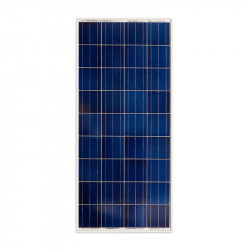
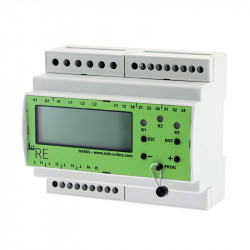
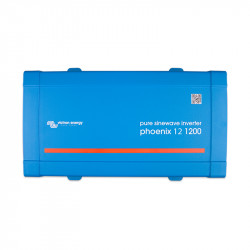
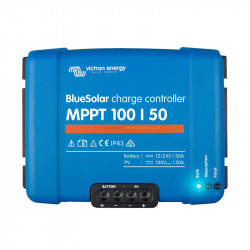
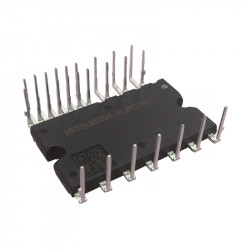
Leave a comment